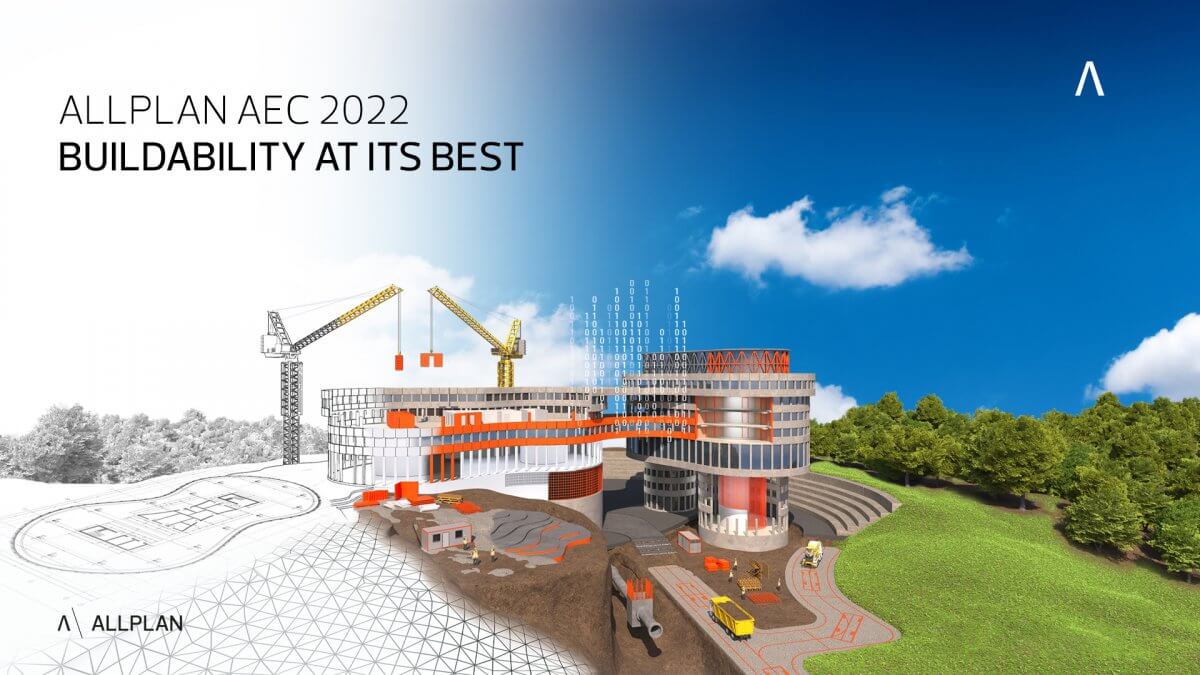Although many contractors use BIM, they are not fully utilizing what BIM has to offer. BIM is obviously a smart, 3D model-based process, but it also elevates models to the next level: Data from 3D models can be extracted and used by construction companies to confirm existing information or discover new information, as well as share valuable information with customers and vendors. Learn about specific examples of the types of data that construction companies can find within their BIM models.

1. How are the majority of contractors utilizing BIM data?
With BIM data, contractors can develop efficient digital workflows using consistent data in their projects from planning, coordination, construction to project handover. BIM can simply mean coordinating model data from different authoring softwares or can go all the way to the construction site without a drawing and working with mobile devices. However, the adoption of BIM in reality is not always the same, depending on project requirements. Even when large contractors are required to follow BIM protocols, they may not comply in all operational sectors and expect 2D drawings as their deliverable. However, there is still a requirement for them to maintain the certain BIM level which is expected in the contract to handover the project to operations teams.
2. What benefits does BIM provide that contractors are unaware of?
Cloud-based open BIM systems provide unprecedented levels of connectivity. BIM databases or Common Data Environments (CDE) are also common in this sector. The majority of them specialize in various fields. Contractors must consider how data is organized and presented, as well as how to connect these many data centers and avoid adopting methods based on closed solutions, which could pose problems in the long run.
3. What can contractors do with BIM data that they might not be aware of?
Contractors have highly particular requirements that vary per project. It’s difficult for them to stay on top of all the functional capabilities available in model management and CDEs on the market. What software is delivered is shaped by their requirements. Sometimes all that is necessary is basic management of 2D designs generated by authoring tools, while other times clash detection of intricate reinforcement, logistical requirements, and project planning are the driving forces. What matters is that contractors see no barriers to using BIM data to improve their work life for all of these jobs.
4. What types of information can be extracted from BIM 3D models by contractors?
It all depends on how the contractors intend to use the BIM model. If it is coordination, it is critical to have workflows in place that notify project members of activity, change, issues, due dates, and so on. If the ultimate goal is to use the model for scheduling and project planning, at the very least access to the data components required to do so should be available. The ability to manage model components within the BIM environment is critical here because the site-based model is likely to be made up of different authoring tools with no consistency.
5. How can this data be used to improve the construction process?
The data is crucial, but the data’s visibility and accessibility are as important. The BIM model should serve as the sole source of information. The most advantageous consequence of all systems employed in one project is an integrated BIM approach. Operations carried out in one domain should result in a controlled change in another domain. It is necessary to alter if the installation of BIM on a project does not break the traditional manner of data linked with construction in the past. The chosen software solution should facilitate flexible deployment and address the issues of determining the optimum match for all BIM execution plans. If this is well thought through, the data should provide the following improvements in a project:
- More accurate digital representation of the physical assets
- Easier handover to different disciplines
- Developing an audit trail
- Providing complete transparency over the entire project
- Raise the bar on communication.
6. What can be done with this information to improve client communication?
On site and in the design office, stakeholder meetings are common; having all of the data and information in one location helps all disciplines to contribute to discussions and sign off on their respective areas. In BIM-mandated projects, the days of manually putting information together should be over; instead, this information should exist in a managed solution, with everyone working from coordinated models in a shared or published state.
7. Is there a real-world example of a construction company using data from a BIM 3D model to successfully complete a project?
It’s impressive to see how Allplan software is being used on projects and integrated into workflows. A recent example of a train station in Switzerland demonstrates the use of BIM from start to finish, from model creation to on-site construction. Everything in this project was delivered via a digital platform. The difficulties stemmed from logistics planning, as the station had to remain operational. The BIM model was critical in optimally integrating all planners in the process for all aspects of the development and refurbishments.
Another project was in the Netherlands for a maritime project, and the contractor needed to ensure that errors were minimized and the possibility of rework was reduced. The central BIM model aided this process, especially since the design team was dispersed globally – an important aspect that is frequently overlooked. BIM allows for very effective remote working, including live streaming of work processes in some cases and no waiting for critical information.
Source: blog.allplan.com
Download Allplan AEC 2022 Now!
Allplan 2022 mang đến phương pháp làm việc tích hợp cho các kiến trúc sư, kỹ sư và nhà thầu trên một nền tảng duy nhất từ thiết kế ban đầu đến khi hoàn thiện thi công trên công trường. Các quy trình làm việc được tích hợp liền mạch giúp rút ngắn quá trình phối hợp, làm tăng hiệu suất và giá trị của dự án – mang đến khả năng xây dựng ở mức tốt nhất.
- Mang đến sự hợp tác nhịp nhàng giữa kiến trúc sư và kỹ sư.
- Tự do chuyển đổi giữa các phương pháp làm việc 2D và 3D
- Xem xét việc triển khai thi công ngay trong giai đoạn thiết kế
- Mang đến hiệu suất tối đa cho các dự án lớn và phức tạp
- Công nghệ đám mây mạnh mẽ hỗ trợ hợp tác liên ngành
- Quy trình làm việc tích hợp giúp tăng hiệu quả và giá trị của dự án


NEWSLETTER
Nhận các thông tin về Allplan qua email
Giải pháp toàn diện cho kỹ sư và kiến trúc sư
ALLPLAN is part of the Nemetschek Group.
-
Singapore: ALLPLAN Software Singapore PTE. LTD. |
4 Battery Road #25-01, Bank of China Building
49908 Singapore - customercare.singapore@allplan.com

